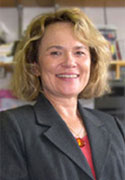Researchers at the Beckman Institute have developed a new optical microscopy method that can peer into the nanoscale world of live cells in ways unmatched by current techniques. Called Spatial Light Interference Microscopy (SLIM), the method combines phase contrast microscopy and holography to create a fast interferometric imaging technique that is extremely sensitive to the nanoscale structures and interactions of cells and tissues.
Gabriel Popescu, professor in the Department of Electrical and Computer Engineering and head of the Quantitative Light Imaging Laboratory at Beckman led the collaboration, which resulted in papers published earlier this year in Optics Express (PDF) on the new technique and in the Journal of Biomedical Optics about its use for tracking particles in living cells.
“It’s pretty close to looking from above from a highway, trying to understand how the cars are moving, and this is in real-time, looking at the actual dynamics of the cells,” Popescu said.
The technique works by combining the high contrast intensity images of transparent specimens inherent in phase contrast microscopy with holography, where the phase information from the object is recorded. By using this technique, the researchers write in Optics Express, “SLIM reveals the intrinsic contrast of cell structures and, in addition, renders quantitative optical path-length maps across the sample. The resulting topographic accuracy is comparable to that of atomic force microscopy, while the acquisition speed is 1,000 times higher.”
The technique has the ability to visualize at different scales (from 200 nm and up), providing novel insights into crucial biological functions such as transport inside a cell.
“What we are trying to understand is how the combination of these scales affects the transport of matter, what makes the cell a living machine, rather than a bunch of particles in a suspension,” Popescu said. “The different scales are very important when you treat the cell as a material. Temporal and spatial sales are crucial for understanding how a cell acts as a very complicated material.”
In the Journal of Biomedical Optics paper titled “Label-free intracellular transport measured by spatial light interference microscopy” Popescu, lead author Zhuo Wang and their collaborators report on using the SLIM method to perform quantitative phase imaging (QPI) of cells and tissues. They write that by using the SLIM method they were able to gain “an unprecedented level of detail in cell structure, without the gradient artifacts associated with differential interference contrast microscopy, or photobleaching and phototoxicity limitations common in fluorescence microscopy. This method, referred to as Laplace phase microscopy, is an efficient tool for tracking vesicles and organelles in living cells.”
The capabilities of the SLIM technique, which can be used as an easy add-on to an existing microscope, should prove useful for a wide variety of microscopy needs, but without the disadvantages of other methods. The researchers write that their results “demonstrate that rich and quantitative information can be captured from biological structures using SLIM without physical contact or staining” and that “SLIM is implemented as an add-on module to an existing phase contrast microscope, which may prove instrumental in impacting the light microscopy field at a large scale.”
The method, as reported in two Optics Letters papers, has potential applications for imaging cancer and other tissues in a clinical setting. The work by Popescu, along with University of Illinois researchers Lynford Goddard, Stephen Boppart, Martha Gillette, and Jennifer Lewis, is funded by a grant from the National Science Foundation to establish SLIM as a shared facility by 2014.

